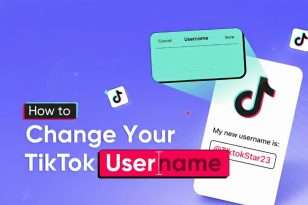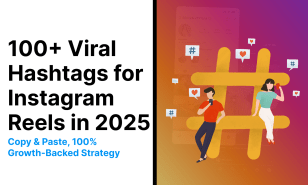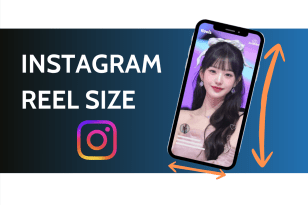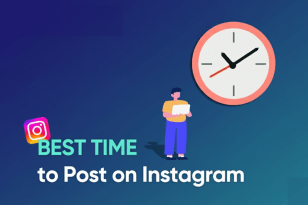We already know that data is not just helpful; it’s necessary. Successful marketers use a lot of customer data to stay ahead, from personalizing customer journeys to making ad campaigns more effective. But not all data is the same.
Behavioral data and intent data are two of the most common types of data that people use and mix up. Both give you useful information, but they have completely unique roles in your marketing plan. One tells you what a customer has done. The other shows you what they might do next.

If you want to build smarter funnels, send messages that are more relevant, and get more conversions, you need to know the difference between these two types of data. We’ll go over the definitions, differences, and uses of behavioral and intent data in this article.
What is Behavioral Data?
Behavioral data is the things that users do that you can see when they use your eCommerce store or other digital properties. This includes everything from clicks and page views to time spent on a product page, adding items to the cart, or even abandoned checkouts. In short, behavioral data tells you what your customers did.

For example, behavioral data is when a customer looks at winter jackets, adds one to their cart, but doesn’t buy it. It’s a reflection of what users are interested in, what they want to do, and what might cause problems. All of which can be seen through their interactions with your site.
Common sources of behavioral data in eCommerce include:
- Website analytics tools like Google Analytics or Hotjar.
- Email platforms keeping track of opens and clicks
- CRM systems keep track of user sessions or product engagements.
- On-site events such as video views or form submissions
Behavioral data is very helpful for figuring out patterns and making the user experience better. But it’s inherently reactive; it only shows what has already happened, which makes it harder to guess what will happen next. That’s when intent data comes into play.
Intent data is all about figuring out what a possible buyer is going to do next. Behavioral data shows what people have done in the past, while intent data shows what people are planning to do in the future. For example, it can show that a customer is actively researching, comparing, or getting ready to buy something.
What is Intent Data?

In the eCommerce context, intent data could include:
- Repeated visits to a high-ticket product page.
- Searches for “best [product] under $100.”
- Reading reviews or comparison articles.
- Adding multiple related products to a wishlist.
- Going back to a website after clicking on a promotional email.
There are two types of intent data:
- First-party intent data comes from your own website or app.
- Third-party intent data comes from outside platforms, forums, publisher sites, or data providers.
Intent data can be harder to gather and analyze, but because it is proactive, it is a very useful tool for marketers. You can step in with very specific messages, offers, or product suggestions that help a customer make a decision when you know they are close to making one.
When used correctly, intent data lets you go from reactive marketing to predictive engagement, which means you can meet customers at the right time to buy.
The Main Differences Between Behavioral and Intent Data
Behavioral and intent data both give useful information, but they are used for different things and work on different schedules. To use each of these effectively in your eCommerce strategy, you need to know the differences between them.
| Aspect | Behavioral Data | Intent Data |
| Focus | Past actions | Future likelihood |
| Collected From | Website, email, CRM, app interactions | On-site behavior + third-party sources |
| User Signals | Clicks, time on page, cart additions | Search queries, comparison behavior, product revisits |
| Granularity | High: detailed, session-specific | Broader: cross-channel or aggregated |
| Use Cases | Personalization, UX optimization, retargeting | Lead scoring, targeting, proactive messaging |
| Mindset Reflected | What the customer did | What the customer might do next |
You could say that behavioral data is like reading someone’s diary, and intent data is like hearing what they plan to do. Both give you context, but intent gives you an edge over your competitors, especially when timing is everything.
That’s why the best eCommerce brands don’t just use one. They use both to get a better idea of who their customers are.
How to Use Behavioral Data in eCommerce
Behavioral data is a goldmine for figuring out how customers use your store and making that experience better to boost conversions and keep customers. It’s especially helpful for improving your marketing, UX, and personalization strategies because it shows how real users act.
Here are some of the best ways to use behavioral data in eCommerce:
Personalized Product Recommendations
You can give each user personalized product suggestions based on their browsing history or the categories they look at the most. This will increase the average order value and lower the bounce rate.
Retargeting Campaigns
Behavioral data is what makes retargeting ads work. These ads remind people of products they looked at but didn’t buy. You can time these nudges just right to get them to finish the sale.
Segmentation and Email Triggers
Use information like abandoned carts, repeat visits, or product views to divide your audience into groups and send them highly relevant, automated emails, such as alerts that an item is back in stock or limited-time deals.
UX and Funnel Optimization
You can find friction points and ways to improve conversion rates by keeping track of how users move around your site (where they leave, what they click, and how long they stay).
How to Use Intent Data for eCommerce
Behavioral data helps you respond to what people have done in the past, while intent data gives you a head start by letting you proactively reach out to shoppers who are already on their way to making a purchase. This makes it a great tool for getting new customers, targeting them, and turning them into customers.
When you add intent data to your campaigns, you stop guessing what your audience wants and start knowing when they’re ready to buy. This makes conversions happen faster and gives you a higher ROI.
Here are some good ways that eCommerce marketers can use intent data:
High-Intent Audience Targeting
Use intent signals, like going to the same product page over and over or searching for product comparisons, to find shoppers who are closer to making a purchase. You can send them special offers, messages based on how urgent they are, or even reach out to them one-on-one.
Trigger-Based Campaigns
Intent data can start automated responses that happen at the right time. For instance, if a customer comes back to compare similar items for the second or third time, you could show them a pop-up with a discount or start a personalized chat.
Ad Campaign Optimization
Use both first-party and third-party intent signals to make ad audiences smarter. Instead of wasting money on a wide range of people, you can focus on people who are already looking for the kinds of products you sell.
B2B eCommerce Lead Nurturing
Intent data is very important for B2B eCommerce because it helps you decide which leads to focus on. Platforms like ZoomInfo help teams identify in-market buyers based on firmographic and behavioral signals, using intent signals to drive sales with precision.
Why You Should Use Both
While behavioral and intent data each offer value on their own, the real magic happens when you use them together. Think of it as combining context with timing. Behavioral data helps you understand how users engage, while intent data shows you when they’re ready to act.
Here’s why that matters:
- Smarter Segmentation: Combining both datasets allows you to create ultra-targeted segments, like users who’ve visited a product page multiple times and shown third-party purchase signals.
- Better Timing: Behavioral data can tell you what a user did last, while intent data tells you what to do next. That combo improves the timing of your outreach, ads, or offers.
- Increased ROI: When your campaigns are based on both historical behavior and real-time intent, your targeting becomes sharper and your ad spend goes further.
- Future-Proofing: As privacy restrictions grow, first-party behavioral data paired with reliable intent signals offers a more sustainable way to track and understand your audience.
Behavioral + Intent Data: Your eCommerce Power Combo
Understanding your customers is a must. Behavioral data gives you insight into what shoppers have done, while intent data reveals what they’re likely to do next. Each offers value on their own. But combined together, they provide the context and timing you need to deliver the right message at exactly the right moment.
Marketers who rely only on behavioral data risk reacting too late. Those who embrace intent data, especially when combined with real-time user behavior, can proactively drive engagement, improve conversion rates, and stay ahead of the competition.
So if you’re serious about growing your eCommerce business, it’s time to stop treating behavioral and intent data as separate strategies. Start integrating them together to unlock smarter, more effective marketing.
Author Bio:
Rizky Darmawan is a digital marketer and research nerd who loves helping brands grow with innovative strategies and creative touch. When he’s not diving into brainstorming ideas, you’ll probably find him gardening in his small yard. Connect with him on https://www.linkedin.com/in/rizkyerde/
![]()










